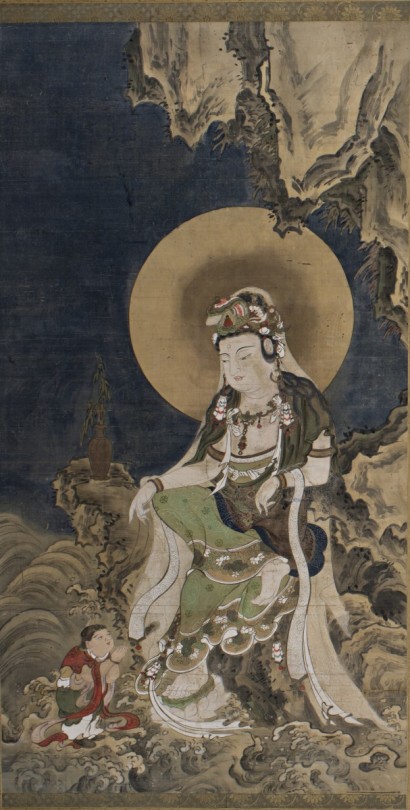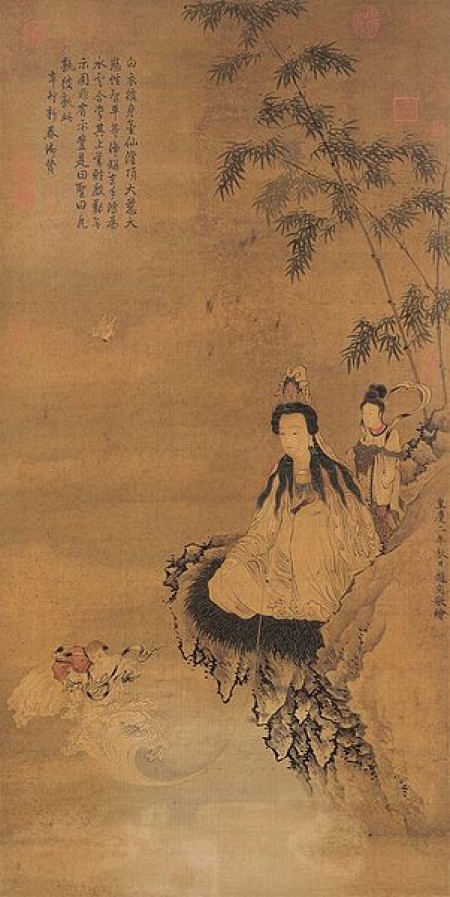Japan, Edo period, 1615–1868; hanging scroll, ink and color on silk; image: 61 7/8 x 33 in., mount: 87 7/8 x 39 1/2 in.; The Frances Lehman Loeb Art Center, Vassar College, Gift of Daniele Selby ’13, 2014.20.1.
Guanyin Acolytes
China, Yuan Dynasty, 1313; ink and color on silk; 41 1/2 x 21 1/2 in.; National Palace Museum, Taipei, 001957N0000000001.
This Chinese painting on the right shows an amalgamation of literati art and folk tales through the bamboo in the background and the presence of Longnu (Dragon Daughter), the female acolyte behind Guanyin. Unlike the plump male Kannon to the left, Guanyin here has slimmer and more feminized physical features. Similarly, Kannon’s sumptuous costume contrasts sharply with Guanyin’s plain white robe. The Chinese work lacks the mutual eye contact between Kannon and the boy pilgrim, yet Guanyin plays a more proactive role by generating auspicious clouds out of her vase for the reverent Shancai (or Sudhana in Sanskrit) to stand on. LL





